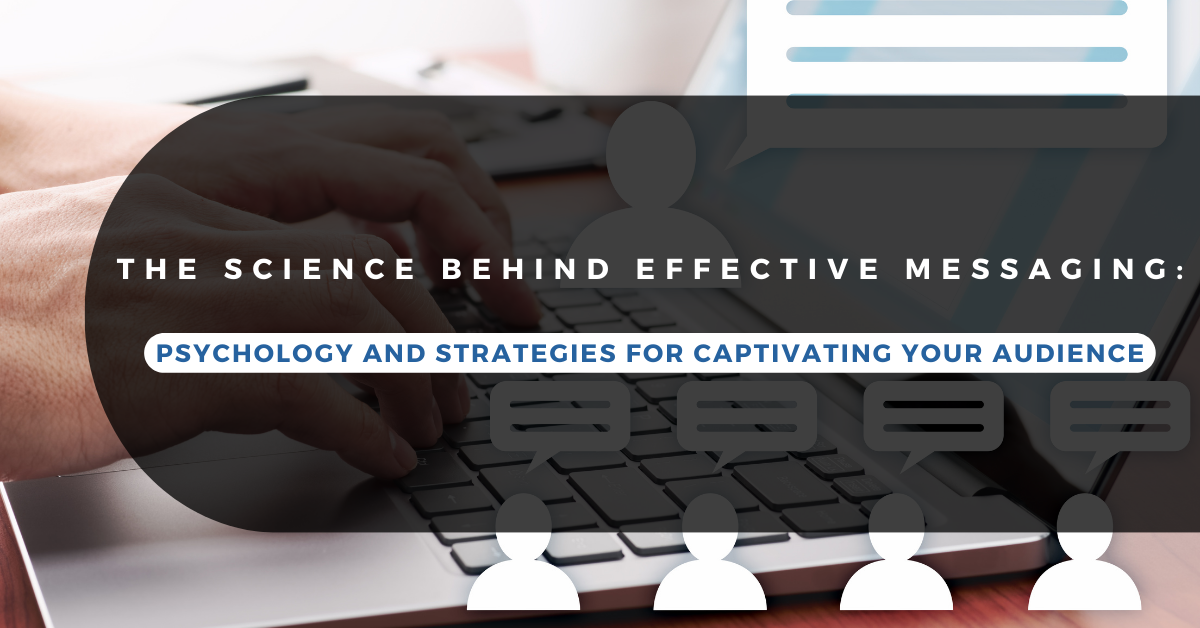The Science Behind Effective Messaging: Psychology and Strategies for Captivating Your Audience
Effective messaging is a crucial component of successful communication and marketing strategies. Understanding the science behind messaging can provide valuable insights into how to captivate and engage your audience. In this blog post, we will explore the psychology behind effective messaging and discuss strategies to craft compelling messages that resonate with your target audience.
The Power of Emotion in Messaging :
Emotions play a significant role in influencing audience response. By evoking specific emotions in your messaging, you can create a lasting impact on your audience. Whether it’s joy, fear, anger, or empathy, understanding how emotions drive human behaviour can help you craft messages that connect on a deeper level. Incorporate storytelling techniques, personal anecdotes, and visual imagery to evoke emotions and engage your audience emotionally.
The Cognitive Science of Persuasion :
Cognitive biases are inherent in human decision-making processes. By leveraging cognitive principles such as social proof, scarcity, and reciprocity, you can create persuasive messages that influence your audience’s attitudes and behaviours. Understand how cognitive biases affect perception and decision-making and apply these insights to shape your messaging strategy. Incorporate testimonials, endorsements, limited-time offers, and personalized incentives to tap into cognitive biases and persuade your audience effectively.
Tailoring Messages to Audience Needs :
Effective messaging requires a deep understanding of your audience’s needs, desires, and pain points. Conduct audience analysis and segmentation to identify key characteristics and preferences. Develop audience personas that represent your target segments and craft messages that resonate with their specific challenges and aspirations. By tailoring your messages to address their unique needs, you can establish a stronger connection and increase engagement with your audience.
The Role of Language and Framing :
Language choice and framing can significantly influence how your audience perceives and responds to your messages. Use persuasive language, storytelling techniques, and framing strategies to shape audience attitudes and behaviours. Choose words and phrases that evoke positive associations and create a sense of urgency or exclusivity. Employ storytelling techniques to create a narrative that captures your audience’s attention and resonates with their experiences. By carefully framing your messages, you can guide your audience’s interpretation and influence their decision-making.
Testing and Optimizing Messaging :
To ensure the effectiveness of your messaging, it’s essential to conduct A/B testing and data analysis. Test different versions of your messages to understand what resonates best with your audience. Analyse data to measure the impact of your messaging and make data-driven improvements. Continuously optimize your messaging by refining your language, testing different calls-to-action, and experimenting with different visuals. By using data to drive your decision-making, you can continually improve your messaging strategy and increase its effectiveness.
In Conclusion, Effective messaging requires a combination of psychological insights and strategic techniques. By understanding the power of emotions, leveraging cognitive biases, tailoring messages to audience needs, utilizing persuasive language and framing, and continuously testing and optimizing, you can create messages that captivate and engage your audience.
Remember, effective messaging is an ongoing process that requires refinement and adaptation. By incorporating the science of effective messaging into your strategies, you can enhance your communication efforts and achieve better results in captivating your audience.


